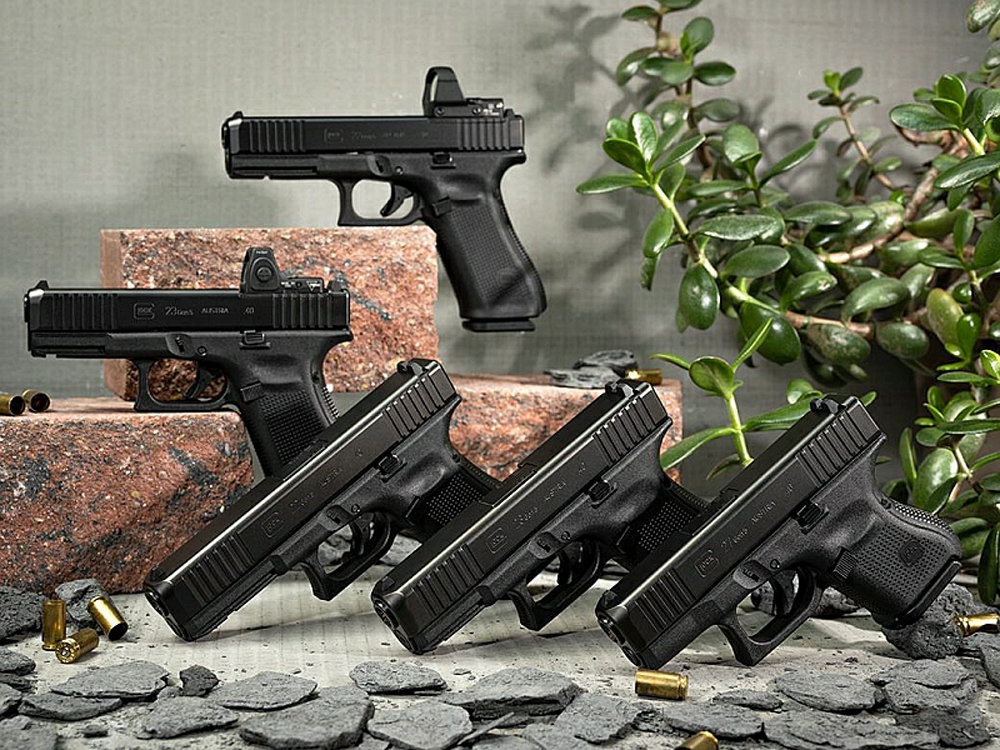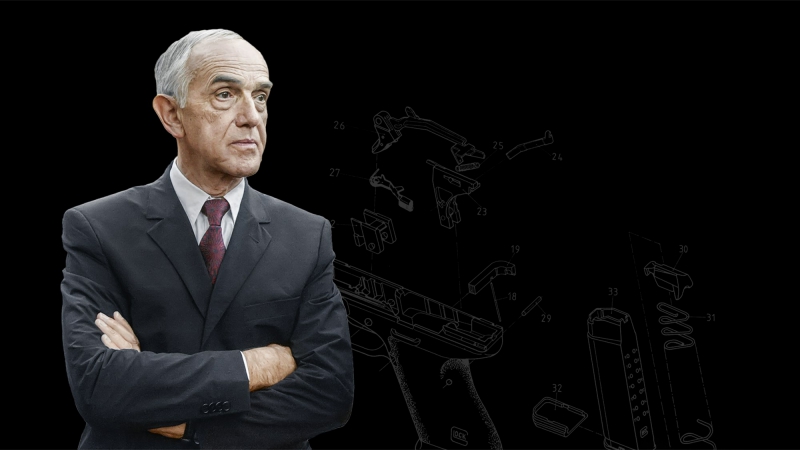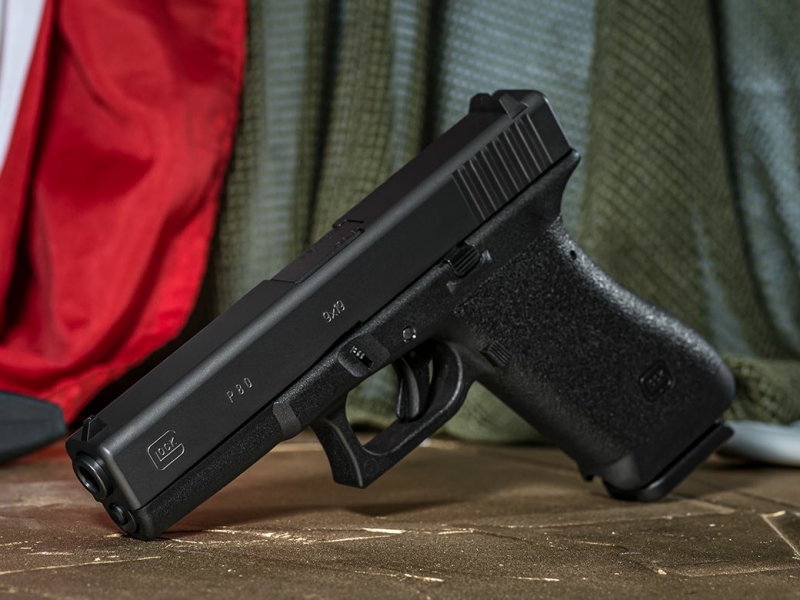Glock is a household word, even among people who aren’t into firearms. The name evokes strong emotions, both good and bad. These handguns are famous, infamous, and even mythical. Many gun owners won’t own anything else, while some refuse to own one at all. Glock handguns are praised and vilified, celebrated and condemned.
To say that Glock is the world’s most popular handgun brand would be understating the fact. But how did a brand barely 40 years old come to dominate the market as it does? The answer lies with an Austrian engineer who decided to try something new. That engineer was Gaston Glock.

Gaston Glock - An Insightful Newcomer
Successful firearms manufacturers rely heavily on their pedigree. That reputation for quality and reliability means a lot. It also helps if the company has been successful in the military and law enforcement worlds. Most top-shelf gunmakers have decades, even centuries, of experience to draw from.
But in 1980, Gaston Glock decided to enter the Austrian Army handgun trials completely lacking a such a pedigree. Glock founded his company, Glock Ges.m.b.H in 1963, initially making curtain rods and other consumer goods. The company developed a relationship with the Austrian military in the 1970s, making knife handles and sheaths, grenade casings, and machine gun belt links. This expansion led to experiments with molded polymers, which paid off big-time with Gaston Glock’s new venture.

The Austrian P80 Pistol
1980 saw the Austrian Army looking to replace its aging Walther P38 service pistols with something more modern. The P38 was a great gun, but it was a pre-World War II design with only an 8+1 capacity, and obsolete by any standard. It was time to move on.
The army announced trials for the new P80 pistol that year and Gaston Glock saw an opportunity. Despite not having a firearms background, he determined to enter the trials. The only problem was that he didn’t actually have an entry. Some may have seen his lack of experience as an impediment, if not an outright barrier. But not Gaston Glock.
His lack of experience led him to consult with many firearms experts, specifically asking them what they would want in a modern service pistol. The Austrian Federal Ministry of Defense published 17 criteria for the new sidearm. Among other things, the ministry wanted a self-loading pistol chambered for 9mm Luger, easily loaded magazines, that was drop safe from a height of two meters onto a steel plate.
But Glock wanted to hear from the people who would use the P80. Glock’s consultants told him they wanted a pistol that was easy to fire and easy to learn. Specifically, they said it should be instantly deployable, with no worrying whether the safety was on or not. It should also have a much higher capacity than the current models. Finally, it should be tough and reliable. Soldiers must be able to count on their new sidearm. Glock then examined and tested the best available firearms with which his product would compete.

Glock’s findings, coupled with his knowledge of polymers and metallurgy, led to a sleek, durable, lightweight handgun whose reliability was based on its simplicity. Glock patented his new pistol the next year, dubbing it the Glock 17. In this case, Glock’s lack of pedigree and tradition opened possibilities that might not have otherwise occurred to him. The firearms world was never the same.
The Glock 17
The Glock 17 was so named because it was Gaston Glock’s 17th patent. It’s that simple. Contrary to what some may believe, there are no prototypical Glocks numbered 1 through 16 sitting in a vault somewhere. That includes the porcelain “Glock 7” referenced in the movie Die Hard 2. That’s Hollywood mythology, as I expect most of you are aware. And a porcelain gun? Really?
The Glock 17 won the P80 pistol trials, which included a 15,000-round firing test, after which the trial guns were checked for wear. Each gun then fired a deliberately over-pressured test cartridge. But Glock was an upstart gunmaker, so the army assigned the new handgun a preliminary test. Before the trials even began, the Glock had to fire 10,000 rounds with no more than 20 stoppages. The pistol experienced only a single malfunction. So, the Glock 17 had to fire 25,000 rounds, while the others only fired 15,000.
Even so, the Glock 17 won the trials going away. The Austrian military formally adopted it in 1983. The new pistol not only outperformed the others, but Gaston Glock’s price bid was 25 percent lower. His simple, quality design allowed him to streamline costs in a way competing manufacturers could not at the time.
The Defense Ministry awarded Glock a contract for 25,000 pistols plus spare parts. Glock Ges.m.b.H had to expand its Deutsch-Wagram, Austria production facility quickly, as it had only 38 employees when Gaston Glock embarked on his firearms venture. The Glock 17 passed the NATO durability test in 1984, prompting the Norwegian Army to adopt the gun as well. The Glock was gaining international attention, and its creator turned his eyes west.
Coming to America
Glock is known for shrewd marketing, and nowhere was that better demonstrated than the company’s American expansion efforts. The company brought in respected gun writer Peter Kokalis, who tested the Glock 17, eventually writing a glowing article titled “Plastic Perfection” for the October 1984 issue of Soldier of Fortune Magazine. “Glock Perfection” was born.
Kokalis opened the article by saying, “The best pistol will not win the current XM9 (Personal Defense Weapon PDW) trials. The finest military pistol in the world today, in my opinion, is not entered in the XM9 tests.” It seems that Gaston Glock refused to accept the US government’s requirement that the winning pistol’s designer release the patent and production rights to open bidding. Smart guy, Gaston Glock.

Kokalis touted the Glock’s ease of use and built-in safety system. He especially liked the then-revolutionary Safe Action trigger design that is now ubiquitous across most pistol brands. The Glock’s simplicity, durability, reliability, and the fact that it ate whatever ammo he fed it impressed him greatly. Kokalis eased the concerns of American shooters regarding the “plastic” (we would call it polymer) frame. He noted the gun’s light weight, muzzle heaviness (a virtue), and toughness.
The Soldier of Fortune article caught the eyes of American professionals, and when Glock expanded to the US in 1986 as Glock, Inc., the word was out. Glock, Inc. opened its doors in Smyrna, Georgia, as a distribution outlet. Full production operations took time and were in place by 2013. The company stamps all U.S.-made firearms with “U.S.A.” and a small outline of the state of Georgia.
Glock built its name in America by offering police forces top-quality sidearms at attractive prices. Glock’s timing was fortuitous, as the mid-to-late-1980s saw a spike in the American drug trade, leaving the police looking for better options than their aging revolvers. Aggressive marketing to those agencies quickly gained traction, and, today, roughly 65 percent of US law enforcement agencies feature Glocks as their standard agency sidearm.
Law enforcement adoption paid off on the civilian side since people trusted police firearms. Those people were also willing to pay full retail price, which was still competitive. Glock had the right gun, at the right time, at the right price. It wasn’t long before American police forces and consumers wanted a more compact pistol, which Glock delivered in 1989 as the Glock 19. The rest, as they say, is history.
A Glock is a Glock is a Glock. Mostly.
Despite literally dozens of models, some spanning five generations, Glocks are still essentially the same as the original Glock 17 created for the Austrian military. They are instantly recognizable, since internal and ergonomic improvements have been incremental, and Glock has resisted any temptation for radical change. Frankly, there’s no need for such change. Glock is the epitome of the old adage that says, “If it ain’t broke, don’t fix it.” A modern Gen 5 Glock 17 looks much the same as the Gen 1 model.

Glock Models
Glock currently manufactures 34 models, ranging from the Glock 17 to the Glock 48, including the Glock 19X and 43X. There are also subcategories such as the “X,” “L,” and “S” models. All but four, models 18, 25, 28, and 46, are available to the American public. The G18 is fully automatic and reserved for law enforcement and the military. The G25 and G28 are subcompact .380 ACP models that do not meet US import requirements, and the G46 is a rotating barrel design specially ordered by the German police. Glock 25 and 28 guns are sometimes available from police officers, who can sometimes get them through their departments, but they are rare and expensive.
Glock models have no unified numbering system. Each is numbered sequentially as it’s introduced. There is no code denoting caliber, though the “X,” “L,” and “S” suffixes refer to certain frame and slide sizes or characteristics.
Glock Calibers
Glock offers numerous calibers, with 9mm being the most popular. Other available calibers are .22 Long Rifle, .380 ACP, .357 Sig, .40 Smith & Wesson, .45 ACP, .45 G.A.P. (Glock Automatic Pistol), and 10mm. Available frame sizes are classified as Standard (G17), Compact (G19), Subcompact (G26), Long Slide, and Competition. There are also the G36, G42, G43, and G48 “Slimline” models.

One of Glock’s great strengths is its magazine compatibility. A Glock 9mm magazine will work in almost 9mm Glock pistols, assuming it’s long enough. For instance, a 15-round G19 mag won’t work in a G17 because it’s not long enough. But a G17 mag will work in a G19, G26, etc. An obvious exception is the Slimline 9mm G43. The G19X, thanks to design considerations for the US Army’s XM17 trials, will not accept Gen 5 mags.
Thanks to that general compatibility, your 9mm Glock can hold as little as 10 rounds, or as many as 33, depending on your magazine choice. There are also aftermarket drum magazines offering up to 50 rounds.
Generations
Glock pistols are currently in their 5th generation. Glock no longer manufactures Gen 1 and Gen 2 models. The Gen 3, Gen 4, and Gen 5 guns are all currently available as new products. Gen 4 and Gen 5 Glocks are easily identified since that information is stamped on the slide next to the model number.
There is, however, an evolutionary process through the Glock pistol generations:
- The Gen 2 Glocks were manufactured between 1988 and 1997. They featured improved, textured front and back straps, as well as the .40 S&W and .357 Sig chamberings.
- Glock rolled out the Gen 3 in 1995. The first Gen 3s kept the textured front and back straps and added finger grooves and a thumb rest. Later Gen 3s also added a front accessory rail. The first single stack “Slimline” model, the G36, also debuted with Gen 3, as did the .45 G.A.P. chambering.
- Gen 4 Glocks, introduced in 2010, made the grip texturing less aggressive and included interchangeable backstraps. The basic frame was a bit smaller to accommodate different-sized hands via those backstraps. The Gen 4 also included a reversible mag release. New mags were included for the new mag release, though older mags will also work. Glock added a dual recoil spring assembly to reduce felt recoil. The Gen 4 era added the .380 ACP chambering and the single stack G42 and 43 pistols. Finally, Glock introduced the Modular Optic System (MOS) in 2015 on selected Gen 4 models, giving shooters a factory optics-ready slide.
- Gen 5 represents the latest Glock iterations and includes pistols chambered in 9mm, 10mm, .40 S&W, and .45 ACP. The finger grooves went away, making the grip more compatible with different hand sizes. But the Gen 5 adds some nice features, like ambidextrous slide releases, a flared mag well, and the Glock Marksman Barrel with more aggressive polygonal rifling, a target-style crown, and tighter chamber specifications.

Glock and Safariland
This is the Safariland Blog, so I’d be remiss if I didn’t briefly mention the relationship between Safariland and Glock. Safariland works closely with Glock’s design team so that holsters are available at the pistol’s release date. Being ahead of the game is an absolute must. Agencies wouldn’t take kindly to having new sidearms but no holsters.
Three of the most popular Safariland Glock holsters are the SafariVault Level 3 Duty Holster, the 6000 Series Red Dot Sight Open (RDSO) outside-the-waistband line, and the Incog X IWB Holster. Glock’s practice of keeping similar profiles for all their pistols helps Safariland tweak their holsters for new products or generational changes. Most Safariland holsters will be compatible, first and foremost, with Glock 17 and 19 pistols. Availability for other models is based on law enforcement demand.

Glock Perfection
No firearm is perfect, despite marketing claims to the contrary. But Glock’s track record is second to none. Militaries and police agencies around the world choose Glock more than any other brand. That’s because Glocks are simple, affordable, and they run. They run for a long time. I’ve often heard a proverb stating that a certain expensive, and admittedly better looking, firearm is the gun you show your friends. But the Glock is the gun you show your enemies. That’s a difficult adage with which to argue.
We can always nitpick, and people do nitpick the Glock. I know because I’m one of them. I don’t care for the grip angle. But I cannot, and would not, deny that Glocks are number one for a reason. There are cooler, sexier guns out there and Glocks are not sexy. They are a bit blocky by today’s standards. But Gaston Glock’s dedication to a proven system is admirable, and it just plain works. Yes, Glocks have evolved, as new technology and changing applications demand they should. But Glock has never sacrificed the core philosophy that won the Austrian P80 trials.

The continued market supremacy of the G17 and G19 proves that Glock is doing it right. I think everyone should own a G19, even though I currently don’t. I aim to rectify that hole in my system ASAP, though I may yet choose a G45. I’ll never be a “Glock Guy,” but I can appreciate why many people are.
Only forty years after the G17’s adoption, Glock handguns dominate the industry and have done so for decades, thanks to their creator’s careful diligence, willingness to listen, and admittedly shrewd marketing. He lacked an industry pedigree, so he made his own and cemented a legacy. That is perhaps a lesson for us all. Not bad for a first try, Mr. Glock.









